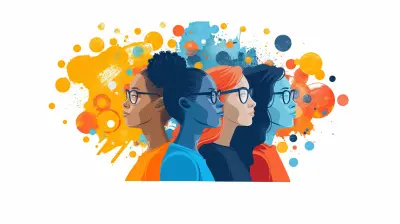How to Teach Students to Approach Problems from Multiple Angles
30 May 2025
Ever seen a student get stuck on a problem, staring at it like it’s an unsolvable riddle? Yeah, we’ve all been there. The truth is, problem-solving isn’t just about finding the right answer—it’s about considering different paths that lead to the solution. That’s the real magic of learning.
Teaching students how to approach problems from multiple angles is a game-changer for their critical thinking skills, creativity, and confidence. But how do we actually do it? Let’s dive into some powerful strategies that will turn students into flexible, outside-the-box thinkers.

Why Is It Important to Look at Problems from Different Angles?
Before we get into the "how," let’s talk about the "why." Why should students bother looking at a problem from various perspectives instead of just following the most obvious route?1. Boosts Critical Thinking
When students explore different approaches, they develop critical thinking skills. Instead of accepting whatever solution pops up first, they learn to question, analyze, and compare alternatives. That’s a skill they’ll use for life.2. Encourages Creativity
Sometimes, the most unexpected approach leads to the best answer. Encouraging students to think creatively helps them develop problem-solving techniques that go beyond textbook methods.3. Builds Confidence
Ever noticed how students get frustrated when their first attempt doesn’t work? Teaching them multiple ways to solve problems gives them options, reducing that feeling of helplessness. They’ll realize there’s always another way, which keeps them motivated.
How to Teach Students to View Problems From Multiple Angles
Now, let’s break down some practical ways to help students master this skill.1. Ask Open-Ended Questions
Instead of giving straightforward questions with a single right answer, ask open-ended ones. Questions like:- What are three different ways you could solve this problem?
- What would happen if you changed one element in the problem?
- Can you solve it without using numbers (or words, or diagrams)?
These kinds of questions push students to think beyond memorized methods and explore different approaches.
2. Use Real-World Scenarios
Let’s be honest—students will engage more if they see how the skill applies to real life. Present problems in a context they care about. For example:- Instead of solving generic math problems, ask, How many pizzas should we order for a classroom party if each person eats 3 slices?
- In history, instead of just memorizing dates, ask, What might have happened if this battle had gone the other way?
Connecting learning to real life helps students see multiple perspectives naturally.
3. Encourage Group Discussions and Debates
Sometimes, the best ideas come from bouncing thoughts off others. Put students in groups and have them discuss different ways to tackle a problem. Encourage them to debate their methods—why does one approach work better than another?Hearing multiple viewpoints helps students realize that there’s rarely just one way to do something.
4. Introduce Mind Mapping and Visual Thinking
Not all students process information the same way. Some think in words, while others think in pictures. Encourage students to use:- Mind maps to visually organize different approaches
- Flowcharts to see step-by-step solutions
- Diagrams and doodles to explain their thinking
When students can see the problem differently, they often understand it from a fresh perspective.
5. Encourage "What If" Thinking
One of the best ways to generate new ideas is by asking What if?- What if you had unlimited resources?
- What if this problem were twice as big?
- What if we solved it the opposite way?
This technique forces students to step outside their usual thought processes and explore new possibilities.
6. Teach the Concept of Multiple Intelligences
Howard Gardner’s theory of multiple intelligences suggests that people solve problems in different ways depending on their strengths. Some students might prefer logical analysis, while others thrive with hands-on learning.Encourage students to leverage their strengths:
- Logical thinkers might break problems into patterns
- Visual learners might sketch their way through the problem
- Kinesthetic learners might act it out or use physical objects
When students understand their thinking style, they become more confident in problem-solving.
7. Present Problems with Missing Information
Traditional problems usually hand students all the information they need. But real-life problems? Not so much.Give students problems where they have to decide what information they actually need. For example, in a business-related math problem, don’t give them the total cost—let them determine which numbers are necessary to calculate it.
This forces them to analyze the problem critically rather than just plugging in numbers.
8. Encourage Reverse Thinking
Sometimes solving a problem backward opens up new insights. Ask students to start with the solution and work their way back to the problem.For example, in math, give them an answer and ask them to figure out what problem could lead to that answer. This strengthens their logical reasoning skills and helps them see multiple paths to the solution. 
Overcoming Resistance to New Ways of Thinking
Not all students will embrace this approach right away. Some might get frustrated or feel like thinking differently is "wrong." Here’s how to help:1. Celebrate Mistakes
Remind students that mistakes aren’t failures—they’re learning opportunities. Encourage them to see errors as stepping stones to a better solution.2. Be Patient
Thinking flexibly takes practice. Guide students gently, showing them that there’s no single right way to approach a problem.3. Model the Process
Demonstrate your own problem-solving process out loud. Show them that even adults try different approaches before settling on the best one.
Final Thoughts
Teaching students to approach problems from multiple angles is one of the most valuable skills you can give them. It’s not just about getting the right answer—it’s about learning how to think critically, creatively, and flexibly.By encouraging open-ended questions, real-world applications, group discussions, visual thinking, and alternative approaches, you’re helping students build skills that will benefit them in school, work, and life.
So next time a student gets stuck, remind them: *There’s always another way.
all images in this post were generated using AI tools
Category:
Problem SolvingAuthor:

Monica O`Neal
Discussion
rate this article
3 comments
Judith Bellamy
This article beautifully emphasizes the importance of diverse problem-solving approaches. Encouraging students to think from various perspectives fosters creativity and resilience—essential skills for their future success.
June 12, 2025 at 4:26 AM

Monica O`Neal
Thank you for your kind words! I'm glad to hear you found the emphasis on diverse problem-solving valuable for fostering creativity and resilience in students.
Nell Mullen
Great article! Teaching students to view problems from different angles is like giving them a superpower! 🌟 It's all about turning challenges into adventures. Let's equip our young thinkers with the tools to see the bigger picture—what fun!
June 1, 2025 at 10:17 AM

Monica O`Neal
Thank you! I completely agree—teaching students to see challenges as adventures truly empowers them to tackle problems creatively. Let's inspire those young thinkers! 🌟
Willow McGarvey
This article offers valuable insights into fostering critical thinking in students. Encouraging them to explore problems from various perspectives not only enhances their problem-solving skills but also prepares them for real-world challenges. A great read for educators!
May 30, 2025 at 3:23 AM

Monica O`Neal
Thank you for your thoughtful comment! I'm glad you found the insights valuable for fostering critical thinking in students.



